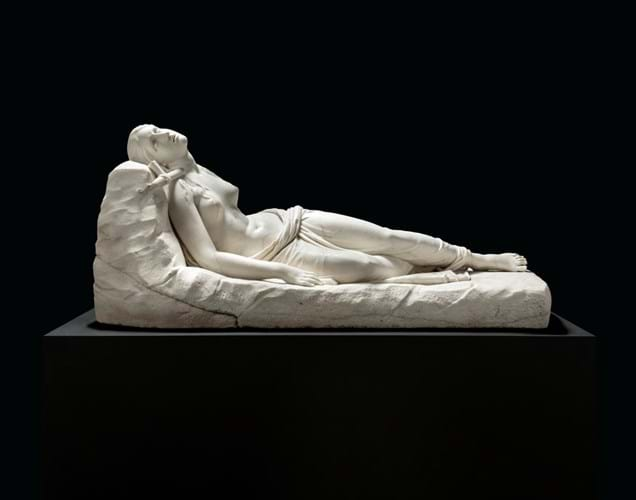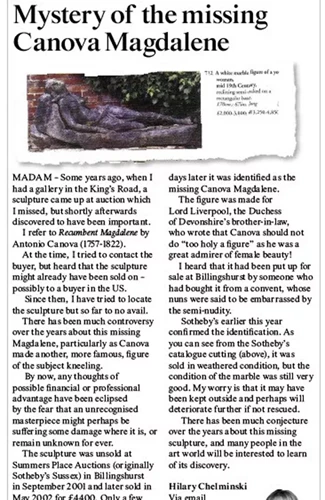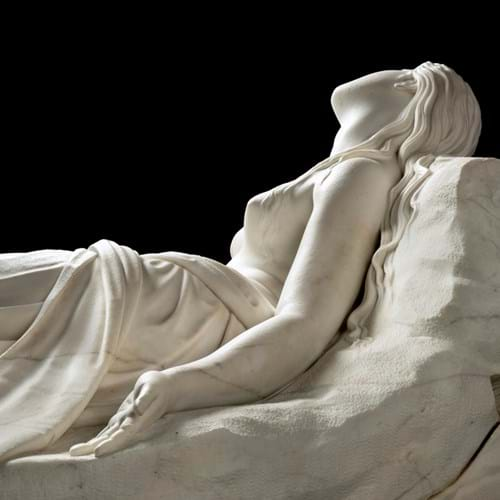
After cleaning and authentication, the Canova sculpture will be offered at Christie’s on July 7 with an estimate at £5m-8m.
According to Christie’s, the Recumbent Magdalene is owned by a couple in the UK who had bought it for their garden. But it is now attributed to the neo-classical sculptor having been commissioned in 1819 by Lord Liverpool (Robert Jenkinson), while he was prime minister, and made shortly before Canova’s death.
Donald Johnston, Christie’s international head of sculpture, said the marble is closely related to the Endymion statue at Chatsworth.
Dr Mario Guderzo, Canova scholar and former director of the Museo Gypsotheca Antonio Canova and Museo Biblioteca Archivio di Bassano del Grappa, said: “This work has been searched for by scholars for decades, so the discovery is of fundamental importance for the history of collecting and the history of art.”

The rediscovered Antonio Canova’s Recumbent Magdalene sculpture will be offered at Christie’s on July 7 with an estimate at £5-8m.
Following research led by Alice Whitehead of art adviser Francis Outred (previously at Christie’s and Sotheby’s) its provenance has been uncovered.
Changing hands through inheritance, it sold a number of times before it was bought by carpet manufacturer Sir Herbert Smith in 1920 as part of the contents and home of Witley Court manor house.
It was shortly after this that its attribution to Canova appears to have been lost. The sculpture changed hands again at auction in 1938 when it was purchased by Violet Van der Elst, a businesswoman who campaigned against the death penalty. In her garden in Kensington, it was later sold with the house and contents in 1959 and again in the late 1960s.

A cutting from ATG issue 2313 showing the weathered condition of the Recumbent Magdalene sculpture in a 2002 catalogue.
The sculpture was the subject of a letter published in ATG in October 2017 from dealer Hilary Chelminski who had missed out on the auction but later discovered the sculpture’s potential importance.
Chelminski wrote: “The sculpture was unsold at [Sotheby's Sussex] in 2001 and later sold in May 2002 for £4400. I heard that it had been put up for sale by someone who had bought it from a convent, whose nuns were said to be embarrassed by the semi-nudity.”






